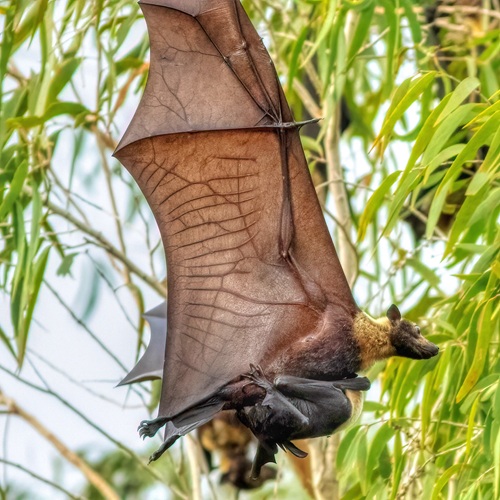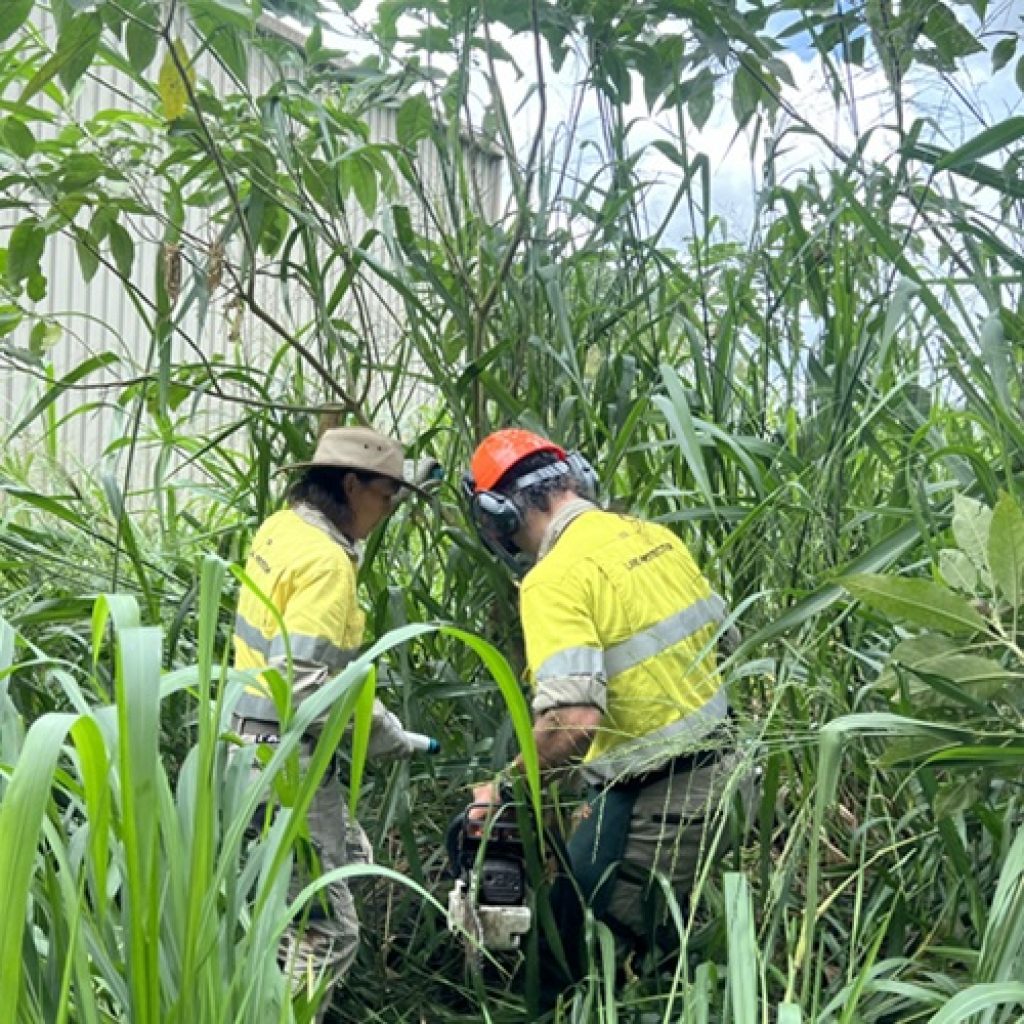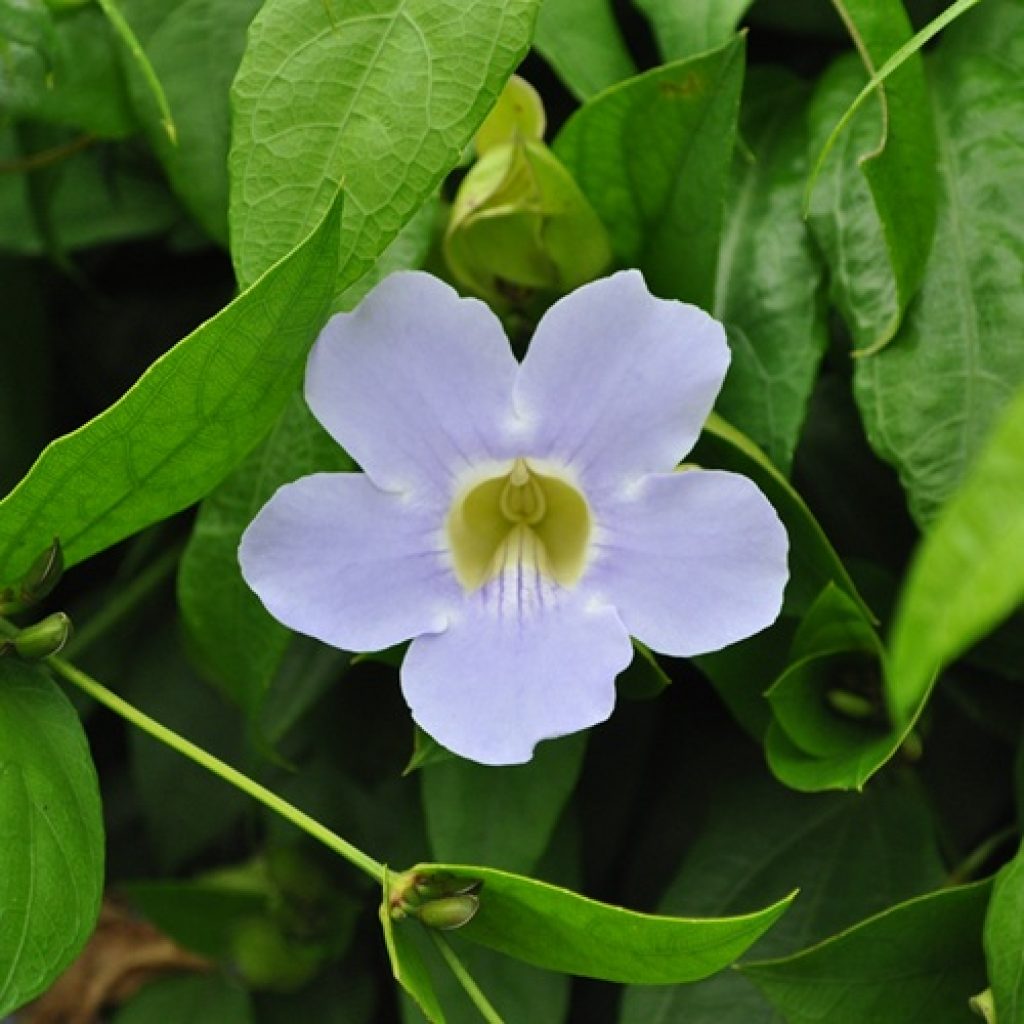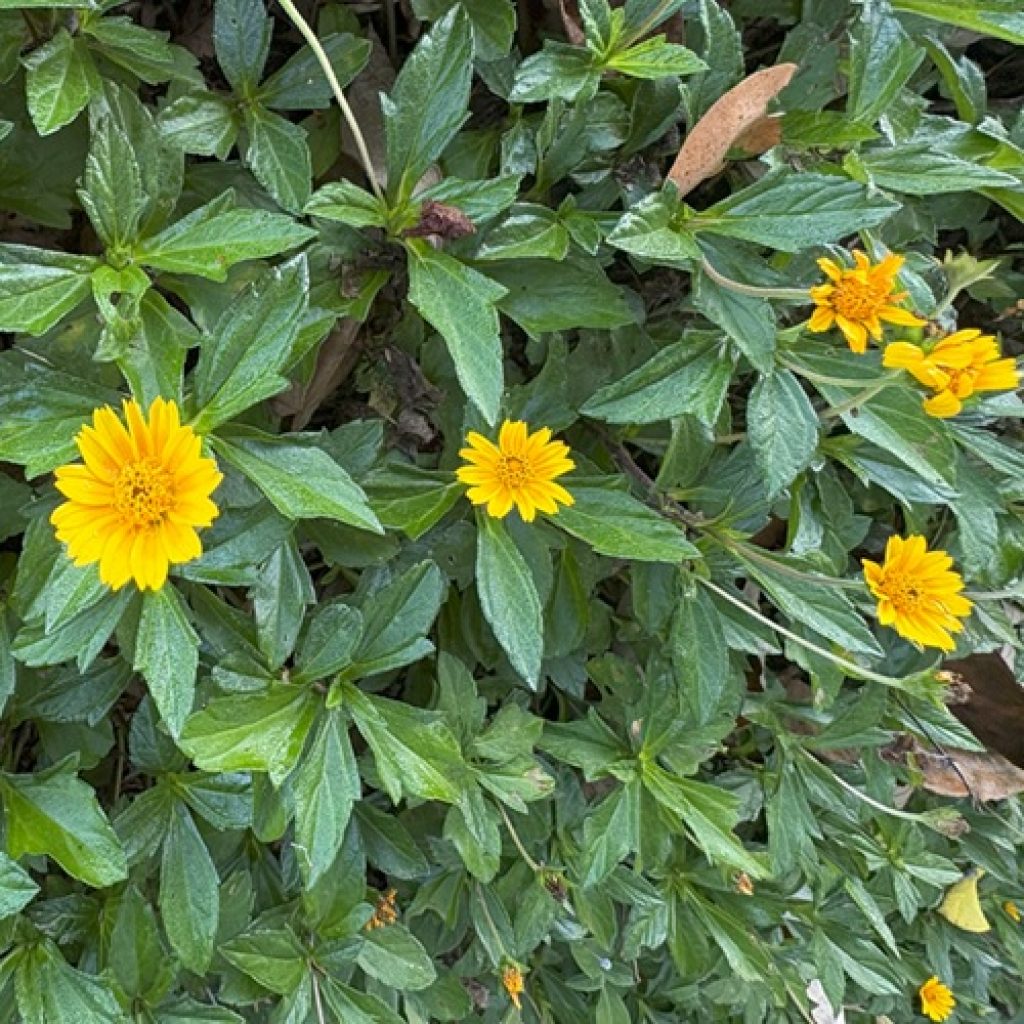SPECTACLED FLYING-FOXES SETTLING INTO MATERNITY ROOSTS
SPECTACLED FLYING-FOXES ARE GIVING BIRTH TO PUPS
9 OCTOBER 2025
The annual baby bat season has begun for Spectacled Flying-foxes as mothers settle into maternity roosts across Far North Queensland to give birth and raise their pups. To minimise pup deaths, the community is being urged to avoid disturbing roosts.
The Spectacled Flying-fox is a fruit bat native to Far North Queensland. It has been listed as endangered since significant population declines were measured and an extreme heatwave in 2018 caused significant fatalities.
Every baby bat counts for this endangered species’ survival
Dr Hilary Whitehouse, Chair of the Spectacled Flying-fox Recovery Team, said population counts between 2000 and 2019 showed a significant decline in numbers, and every pup counts for this species’ survival.
Our forest’s pollinators
“Spectacled Flying-foxes are vital for the health for our rainforests. Like bees, they are pollinators, but they also disperse seeds over long distances helping to regenerate and maintain rainforest diversity,” she said.
“Baby bat season is a particularly vulnerable time. During their first three months, pups can’t fly so they are unable to move themselves away from danger and mothers may abandon their young if they become disturbed or stressed.”
Dr Whitehouse said it is particularly important to avoid disturbing roosts during the day, when mothers are nursing their young, and to keep dogs and other animals away.
“Unfortunately, Spectacled Flying-foxes like to live in areas that people also enjoy,” she said.
Choosing a roost for this birthing season from 70+ possibilities in the Cairns region
“They’ve roosted in the Cairns region since long before Cairns was built and today there are more than 70 roosts across the region. They return to the same area each year for birthing and crèching seasons. However, they also shift seasonally depending on food availability and local climate.
“The birthing and creching seasons usually last from September to March. During this time, numbers of animals at roost sites increase dramatically, which can cause some residents to wonder why they suddenly have so many bats in their backyard.
Roosts used between September and March
“Living close to these roosts in urban areas can be challenging due to the noise and smell, but it is a seasonal behaviour and by Easter they will disperse to other areas.”

Drones, thermal imaging, to monitor bat populations
Terrain NRM and James Cook University are currently monitoring populations of Spectacled Flying-foxes using drones, thermal imaging and AI technology to get a clearer picture of numbers and long-term trends.
Dr Andrew Dennis, Project Leader at Terrain NRM, said populations of Spectacled Flying-foxes have been impacted by habitat loss, human conflict and climate change, including over 23,000 deaths recorded in an extreme heatwave during 2018.
“To rebuild numbers, we need to maximise survival by protecting breeding females and their young while also tackling sources of mortality,” he said.
“At this stage it is unclear whether populations have recovered after the heatwaves in 2018 but we’re trialling new methods which should give us a much more accurate picture of how they’re going. We’re also mapping their roosts across the region and assessing habitat areas for improvement.”
Who to contact if you see a sick or injured bat
Spectacled Flying-foxes are a threatened species with special protections under National and State legislation. It is an offence to harm them or disturb their roosts, and substantial penalties may apply. If you find a sick, injured or dead bat, avoid touching it — call FNQ Wildlife Rescue on (07) 4053 4467.
For more information about Spectacled Flying-foxes go to www.terrain.org.au/spectacled-flying-foxes-faqs
Thanks for giving a flying-fox…a chance!
This project is funded by the Australian Government Natural Heritage Trust and delivered by Terrain NRM, a member of the Commonwealth Regional Delivery Partners panel.
RELATED NEWS
Know Your Weeds: Wild Tobacco Bush
 admin@terrain
admin@terrain
 November 25, 2025
November 25, 2025
Know Your Weeds: Thunbergia Vine
 admin@terrain
admin@terrain
 November 20, 2025
November 20, 2025
Know Your Weeds: Singapore Daisy
 admin@terrain
admin@terrain
 November 11, 2025
November 11, 2025






























